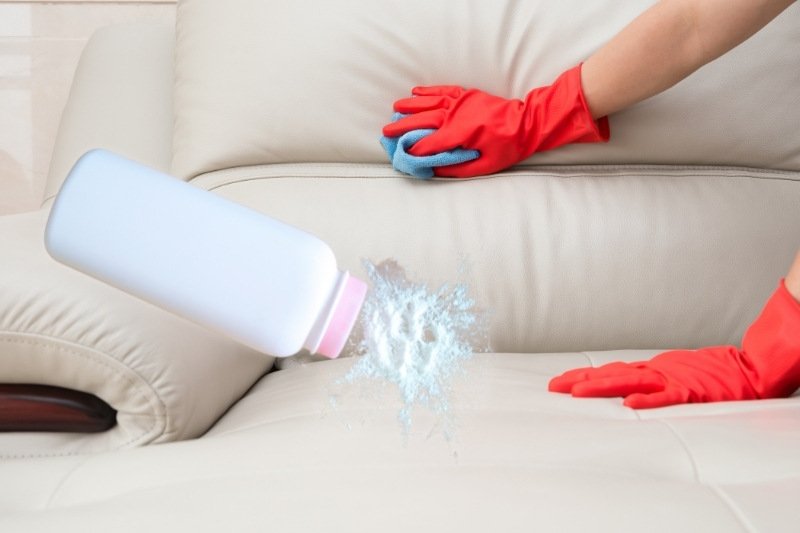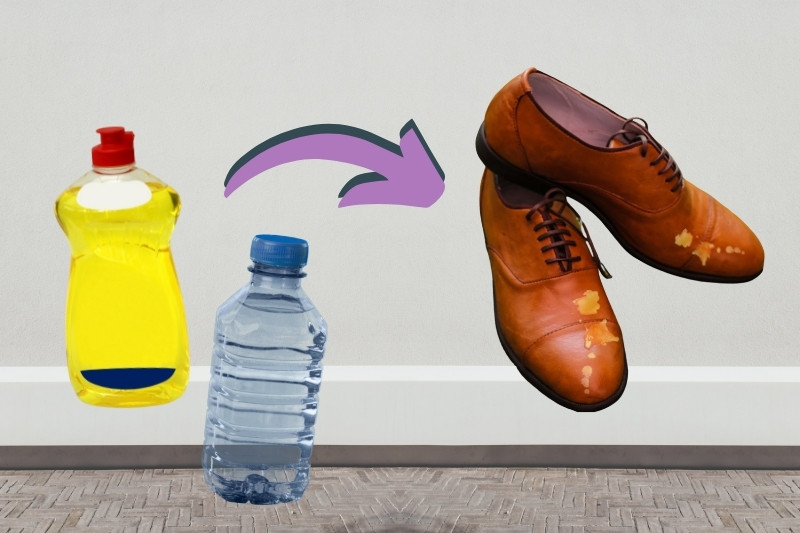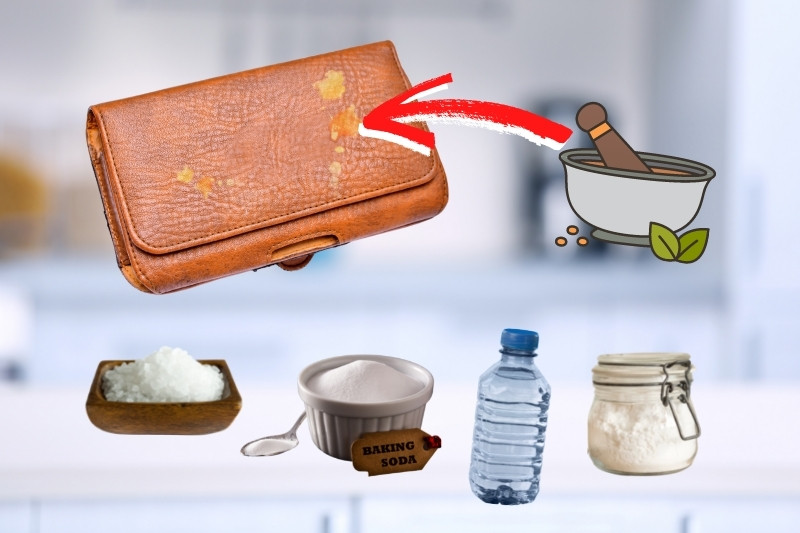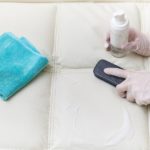Grease is usually a nightmare to remove from worktops, dishes and pans! So, it’ll come as no surprise to hear that it’s difficult to remove it from leather shoes, sofas, bags and jackets.
This horrid little mess has the potential to ruin your items, so it must be eliminated before it wreaks havoc. But how do you get grease out of leather without causing extra damage?
Keep on reading and you’ll find out how to remove grease from your leather items with ease!
Top Tips
Here are some tips for you to think about before trying to remove any greasy marks off a leather item.
- Act fast! The quicker you treat any sort of grease stain the better the outcome will be.
- Spot test! Regardless of what method you choose to use from the list below, you should always do a patch test. A small patch test can prevent you from causing a lot of damage to your leather items, so don’t skip this stage.
- Go easy on the water! There is absolutely no need to drown your leather items in water, this could ruin them further. Stick to little amounts of water, and add more if and when you need to.
- Drying is important! It’s worth keeping in mind that you will need to dry your leather items after they have been treated. So, don’t just skip over this phase and hope for the best.
- Direct sunlight is bad! Once you’re done treating your leather item you might be tempted to leave it out in the sun to dry. While this works for a lot of materials, leaving leather outside can sometimes make it crack. There’s not much you can do when this sort of damage occurs, so it’s best to avoid leaving your leathers in direct sunlight.
- Work from the outside of a stain into the centre! Working inwards prevents the grease from flooding into other areas of your leather items.
- If in doubt, call out a pro! Leather items are generally fairly expensive to buy, so if you don’t feel comfortable treating a greasy stain yourself, ask a professional leather cleaner for help.
How to Get Grease Out of Leather
Below you’ll find a selection of methods you can try in order to remove a greasy mark from your leather item.
Keep in mind that the age and size of a greasy patch will impact how well it can be removed from a leather item. In addition to this, you may find that it’ll take you a long time to remove a particularly greasy mark from leather. In some cases, the stain may be too stubborn to remove and you may need to call in professional help.
Method 1: Talcum powder

This method works well for new greasy stains. For example, if you sat down to eat a bacon sandwich and you tipped some grease onto the leather sofa by mistake!
What you need:
- Microfibre cloth
- Paper towels
- Talcum powder (Alternative: Cornflour)
Steps to follow:
- Act as fast as you can to blot up as much grease as possible from the leather item – use a microfibre cloth to do this, but a paper towel will do if that’s all you have.
- Do not scrub your leather item.
- Keep blotting for as long as possible.
- Grab your bottle of talcum powder.
- Spread the talcum powder all over the greasy patch – work from the outside of the mark into its centre.
- You’ll need to cover the whole patch, so use plenty of powder.
- Wait – overnight will do.
- Use a clean microfibre cloth to wipe away the powder the next day.
- Do not scrub the leather material.
- If you acted fast enough, the grease should be gone. However, if you still see some traces of grease, you should try the methods below to remove the final remnants.
Method 2: Washing up liquid and distilled water

If you’ve got a harder and older grease stain to remove off your leather item this method may be the one for you. For example, you forgot to clean up the butter that dripped onto your leather shoe before work, so you do it when you get home.
What you need:
- Bowl
- Teaspoon of washing up liquid
- Distilled water
- Microfibre cloths
Steps to take:
- In a bowl mix one teaspoon of washing up liquid with two cups of distilled water.
- Mix the ingredients around so the water becomes soapy.
- Grab a microfibre cloth and dip it into the bowl.
- Go to a discreet patch of leather and test out this mixture to see what happens.
- If all is well, continue with this method.
- Dip the microfibre cloth back into the water, but don’t saturate it.
- Gently start bloating at the greasy patch – work from the outside of the stain into the centre.
- Wipe the area down so it’s completely dry – use a clean microfibre cloth.
- If the stain has gone, you’re all done, but if not, you’ll need to repeat the steps above.
- Always make sure that the patch you’re treating is dry before restarting this method.
Method 3: Creating you own degreasing recipe

If you fancy creating your own potion, then this method might be for you. It’s a great method for degreasing leather items, but you do have to collect a few more items before you can actually get to the cleaning.
This is also the method to use on older grease stains – the ones that you may have forgotten about for a few days/weeks. You might even be lucky enough to remove month(s) old stains with this method too.
What you need (adjust measurements accordingly):
- Sea salt – one and a half teaspoons
- Distilled water – 100 ml
- Bicarbonate of soda – one tablespoon
- White flour – half to one teaspoon
Steps to take:
- Mix all of the ingredients in a bowl – sea salt, distilled water, bicarbonate of soda and white flour.
- Keep on mixing the ingredients together until they form a paste.
- Grab a microfibre cloth and dip it into the bowl.
- Go to an unseen patch of leather and test out the mixture you’ve just created.
- If all is well, continue with this method.
- Go back to the greasy patch and start blotting at the area with the microfibre cloth – remember not to oversaturate your cloth with the ingredients in the bowl, little amounts are more than enough.
- Keep blotting at the area and no scrubbing.
- Dab at the area with a new microfibre cloth to soak up any liquid.
- If the grease has gone complete, you’re done. But if you still see traces of grease you will need to continue with this method. But before you repeat this method, give the leather some time to relax.
Alternatives:
You can try these alternative recipes instead, just follow the same steps as the ones above. Remember not to oversaturate your leather item in fluid, and always dry your goods.
- Equal parts of white vinegar and water
- Lemon juice and cream of tartar
Method 4: Buying a specialised product
If making up your own recipes isn’t for you, you can buy products that can help you deal with this greasy task.
It’s worth pointing out early on that specialised degreasers often get mixed reviews from users, and some people have reported that they cause leather discoloration. Of course, everyone’s situation is unique, and the age and size of a greasy stain really does impact how well it can be removed.
Nonetheless, here are some tips to think about when looking at specialised products:
- Have a good look online to see what products are actually recommended
- Read plenty of reviews
- Always do a patch test.
- Think about the price of the product and how much of it you’re actually going to need.
- Find out if you need any other goods as well – colour restorers, for example
- Find out how easy the product is to use before you use it
- Make sure that the product you purchase is leather friendly
- Think about how this product may affect members of your family – some goods can be irritants
Not sure where to start? Check out the Scratch Doctor Leather Degreaser. This degreaser comes in paste form and it can remove tough oil and grease from most leather items, this includes sofa and bags. It’s very easy to apply and to remove from leather goods, and it doesn’t usually take an age to restore your items to their former glory either.
Method 5: Professional help

If you’ve got a leather sofa, or any other leather item, that’s been soiled in grease, and you’ve tried the methods above, or maybe you don’t want to try the methods at all, you can always look for professional help.
There are a number of people up and down the UK who specialise in cleaning and caring for soiled leather furniture, and leather items in general.
You can find these specialists by doing a quick online search. It’s better to work with someone who’s nearer to you, so you can keep costs down. But, of course, if you would prefer to work with a larger and more well-known company you can do so!
Here are a couple of things to keep in mind when looking to hire a professional:
- Do plenty of research – read reviews, ask others and get plenty of quotes
- Ask questions – make sure you iron out all of your concerns
- Find out what products are going to be used
- Ask about additional costs – travel and products, for example
- Consider aftercare – is there something you need to do, will the company visit again, or should you buy some aftercare product(s), for example
- Find out the dos and don’ts before you sign any paperwork

Bethan has a passion for exploring, reading, cooking and gardening! When she’s not creating culinary delights for her family, she’s concocting potions to keep her house clean!






